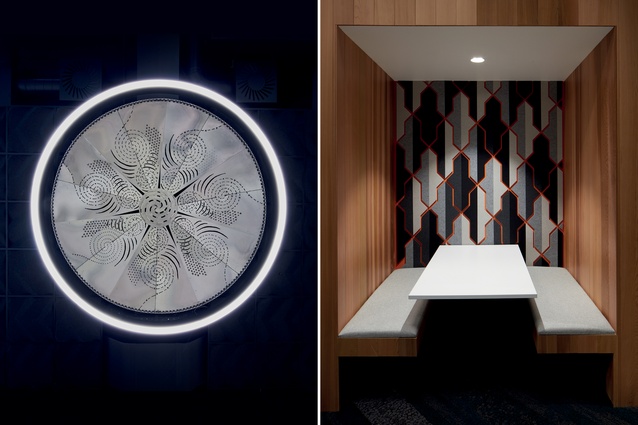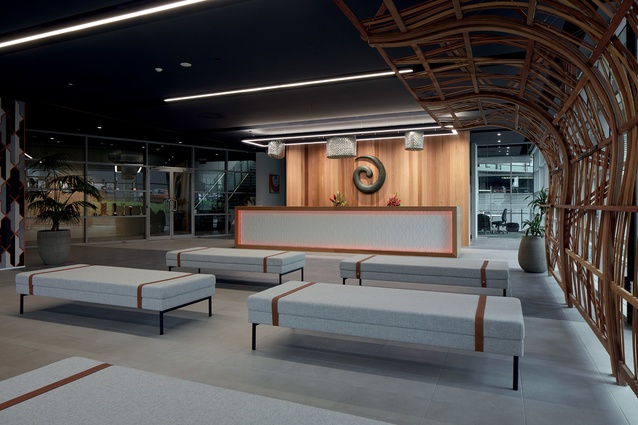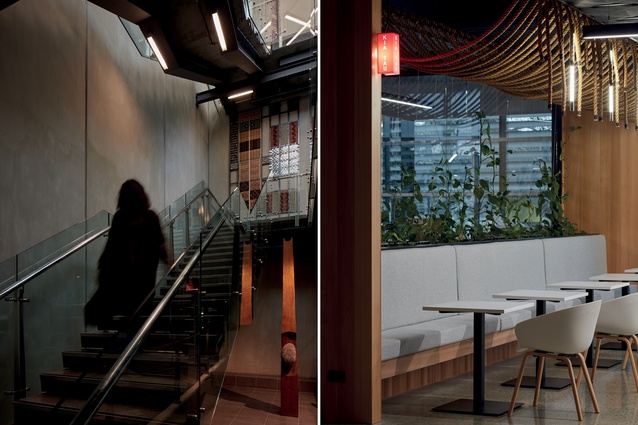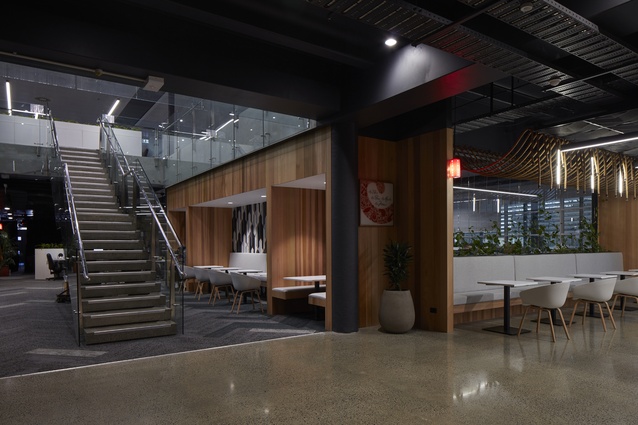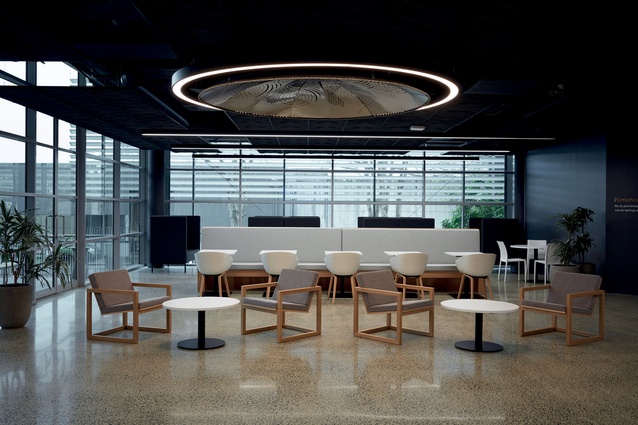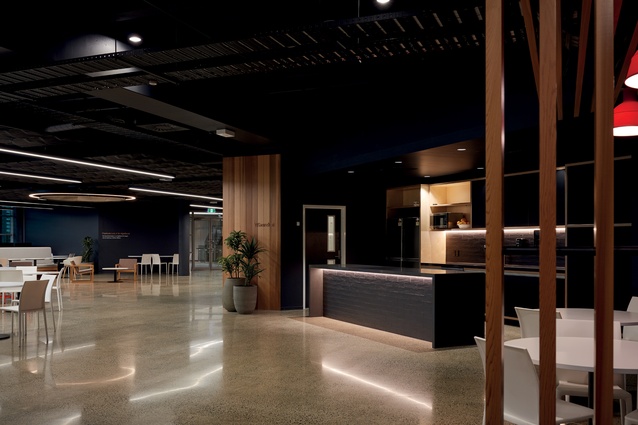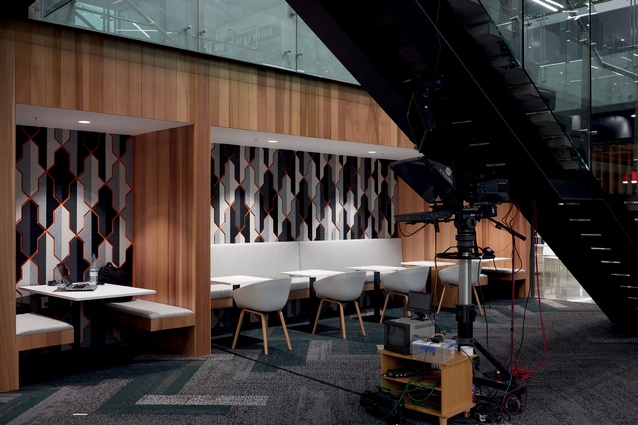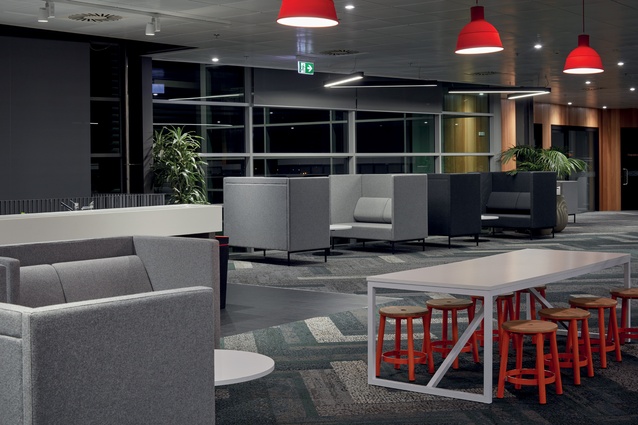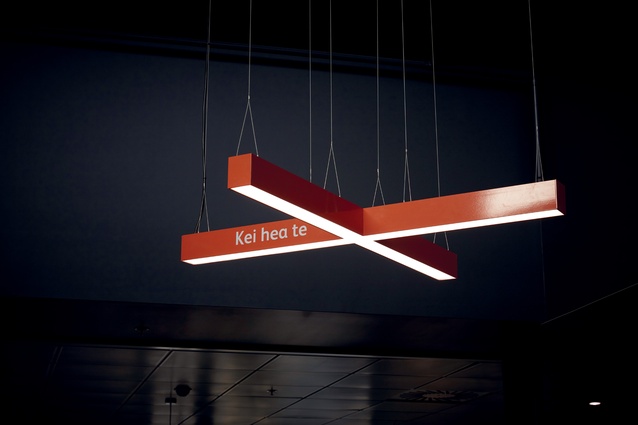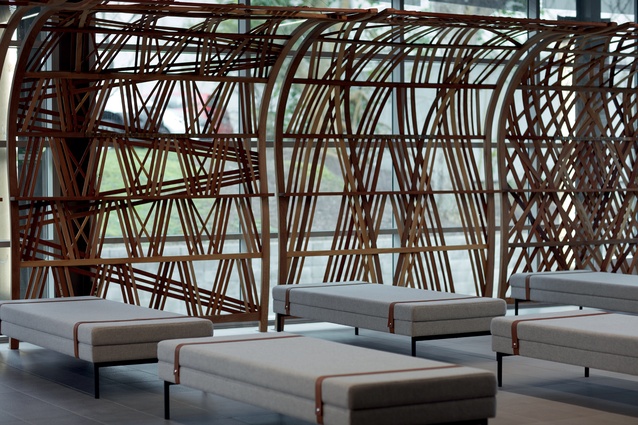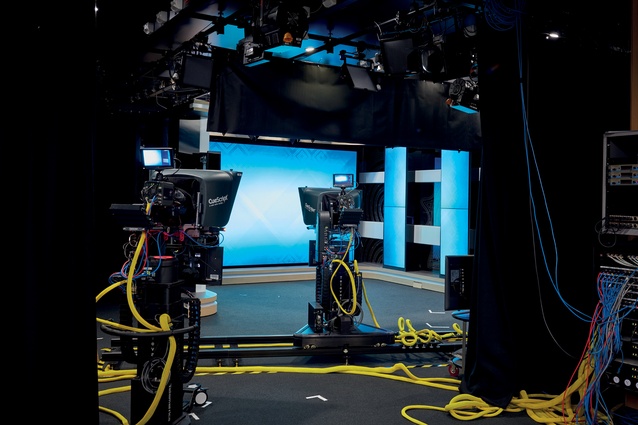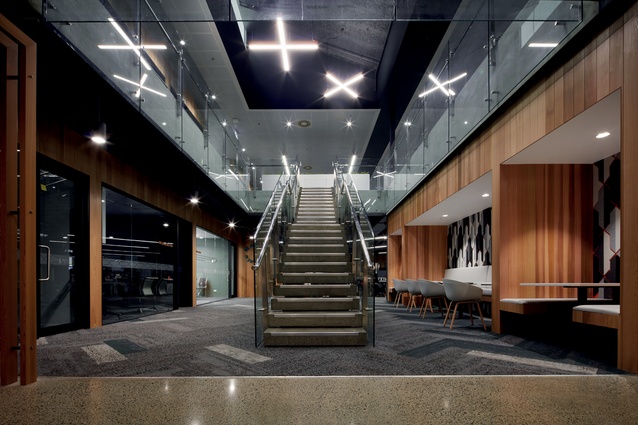Weaving tradition
Māori Television’s new headquarters sought to weave the broadcaster’s DNA into the building fabric.
Every major media provider in New Zealand has upgraded their facilities in the past three years. Mediaworks, TVNZ, NZME, Fairfax and now Māori Television have all undergone transformative change in their working environments. As consumer attitudes change with new technology, there can be no denying the scale of change happening in media businesses.
But while in some instances, the axe has fallen on the journalistic capacity of some of these organisations, in favour of greater tweet capacity, in the case of Māori TV, the changes have been an opportunity to reconsider the vision for the broadcaster and to play this out within a new home.
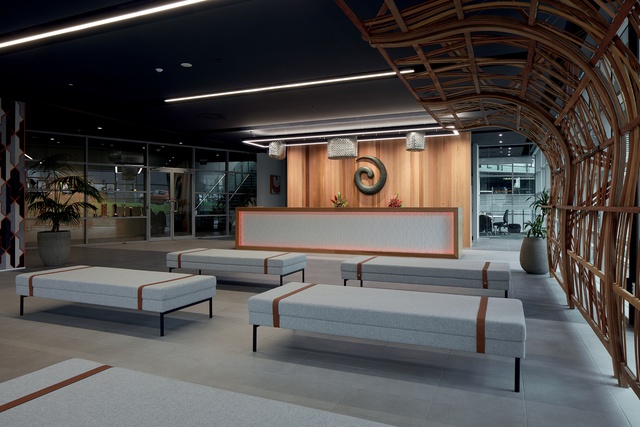
The new offices for Māori TV, designed by RCG in collaboration with artist and craftsman Carin Wilson, are located in an existing building in South Auckland. Inside some fundamental shifts have occurred that mirror trends in many media fit-outs. The focus on teamwork and open-plan working environments is clear and a substantial shift from the previous offices located in Newmarket.
This collective view of staff as a cohort rather than as individuals also underpins the use of a central shared kitchen. The outward-facing social kitchen is amply supported by a larger back-of-house commercial kitchen to enable more than just well-staged cups of coffee. The adage of “He Tāngata, He Tāngata, He Tāngata – what’s the most important thing in the world? It’s the people, it’s the people, it’s the people,” rings true here.
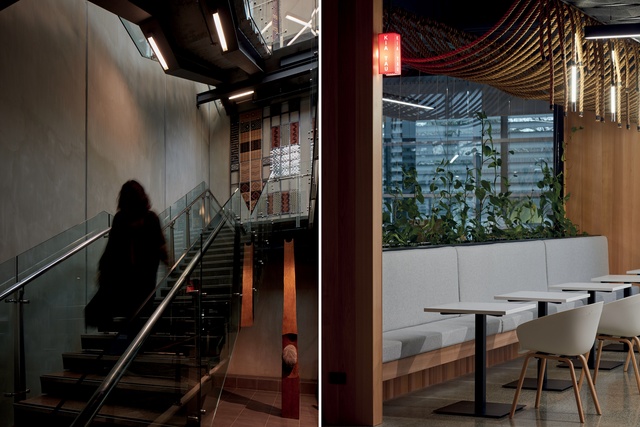
The ambition of the project was substantial. RCG aimed to “weave Māori Television into the building fabric, to bring the company’s very DNA and mauri into the new premises.” The commitment to displaying and celebrating the broadcaster’s unique approach into the space is played out throughout the project in bespoke pieces of art and design.
As one enters the building, there are two pieces that set this tone. On the left, a customised acoustic tile pattern, which is based on an abstracted tuku tuku pattern called purapura whetu.
On the right there is a new piece by craftsman Carin Wilson, Te Haerenga. This four panel work is also a reinterpretation of the traditional patterns of tukutuku in native timbers, tōtara, mātai, rimu, maire, rewarewa, kahikatea and kauri.
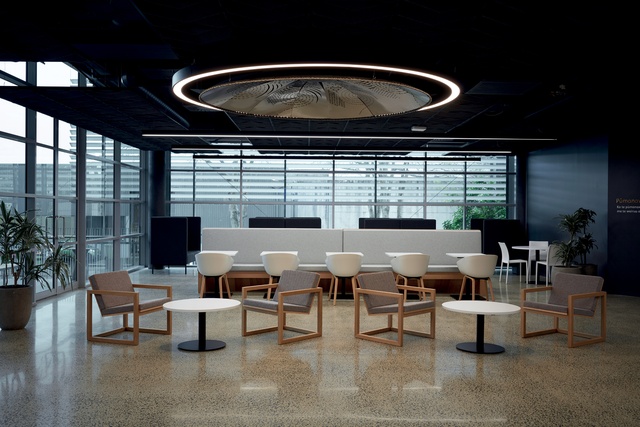
The curvilinear forms of the work “create an enveloping sense of something treasured, as if we are among the taonga in a wakahuia”, according to RCG. The words of a new whakataukī are incorporated into the work too. Wilson describes his inclusion of the words as a linkage back to a less optimistic time for Māori and a reminder to look forward through the arts.
Wilson’s explanation is as eloquent as the physical artwork, “the words came from Apirana Ngata during a dark period when our culture had hit a very low point, and he worked relentlessly to turn that situation around, employing oratory, example and moving widely among his people; all the while anchoring his message in a call to re-engage in art practice.
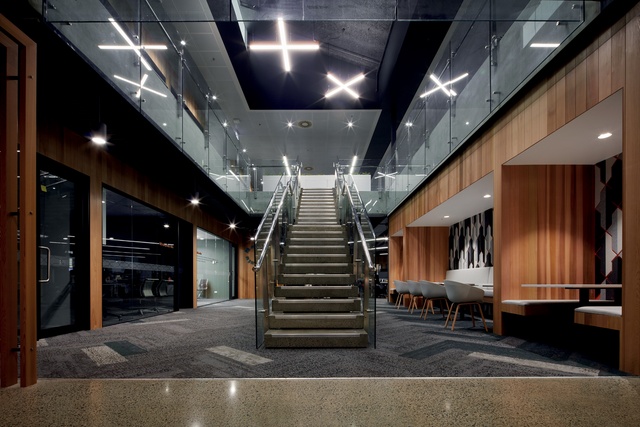
“There are four panels in the piece, and they do trace a path from the state that existed when Ngata framed his words to this new era when Māori Television provides a mouthpiece for the aspirations of its audience.”
“This transition out of that chaotic episode reflected in the first panel – relative confusion, disempowered and lacking the rhythm we associate as innately Māori – as the society resolutely tracks through its reforming stages and finds new patterns and becomes more coherent as the rhythm is restored,” Wilson concludes.
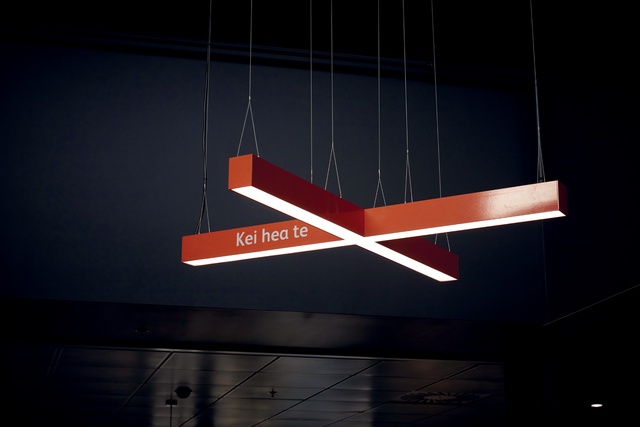
This reflective and projective story telling is central to the design of the fit-out at Māori Television’s new site. Whether it’s in the artworks, the acoustic panelling or the custom carpet designs, there is a sensitivity and specificity in the interior that communicates how Māori Television is different from its competitors. The linkage to the past, the honouring of craft and culture, but also the active production of a new future is palpable here.
SOUNDING OFF
The acoustic challenges of the studio were creatively resolved.
Māori TV’s acoustic requirements range from open, lively, dynamic spaces, traditional working areas and technical spaces that require complete separation from the bustle. The marae-atea-like reception welcomes visitors and draws them into the heart of the interior.
A lively environment is created through the use of glass, polished concrete and cedar, which allows the generation of reverberant sound from conversation, while floating sections of highly absorbent T&R Interior System’s polyester 3-D tiles prevent excessive reverberation.
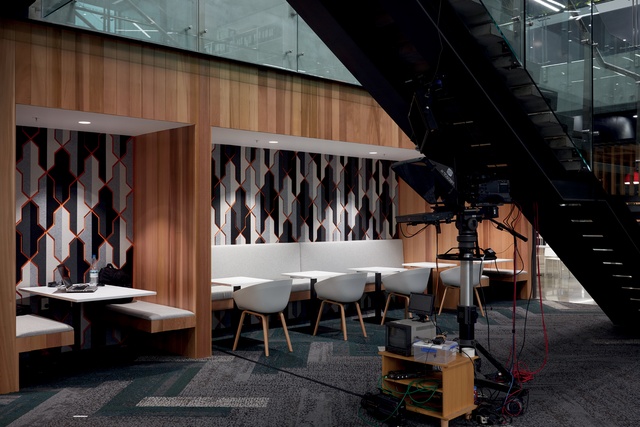
The more focused working areas are behind glazed partitions and a void that acts as an acoustic buffer. In the main workspace, Autex wall panels are high-frequency absorbers and offer the opportunity for textural additions and references to tukutuku motifs.
The design of these was a collaboration between the architects and cultural consultant Carin Wilson, with advice from Nomadtika and Autex, which saw the patterns water-jet cut out of 12mm Peel ’n’ Stick Cube panels.
The burnt orange that features throughout the building was integrated through a negative detail between the Cube sections. Custom woollen upholstered furniture and herringbone carpet designs add further absorption, while the ceilings are left exposed.

